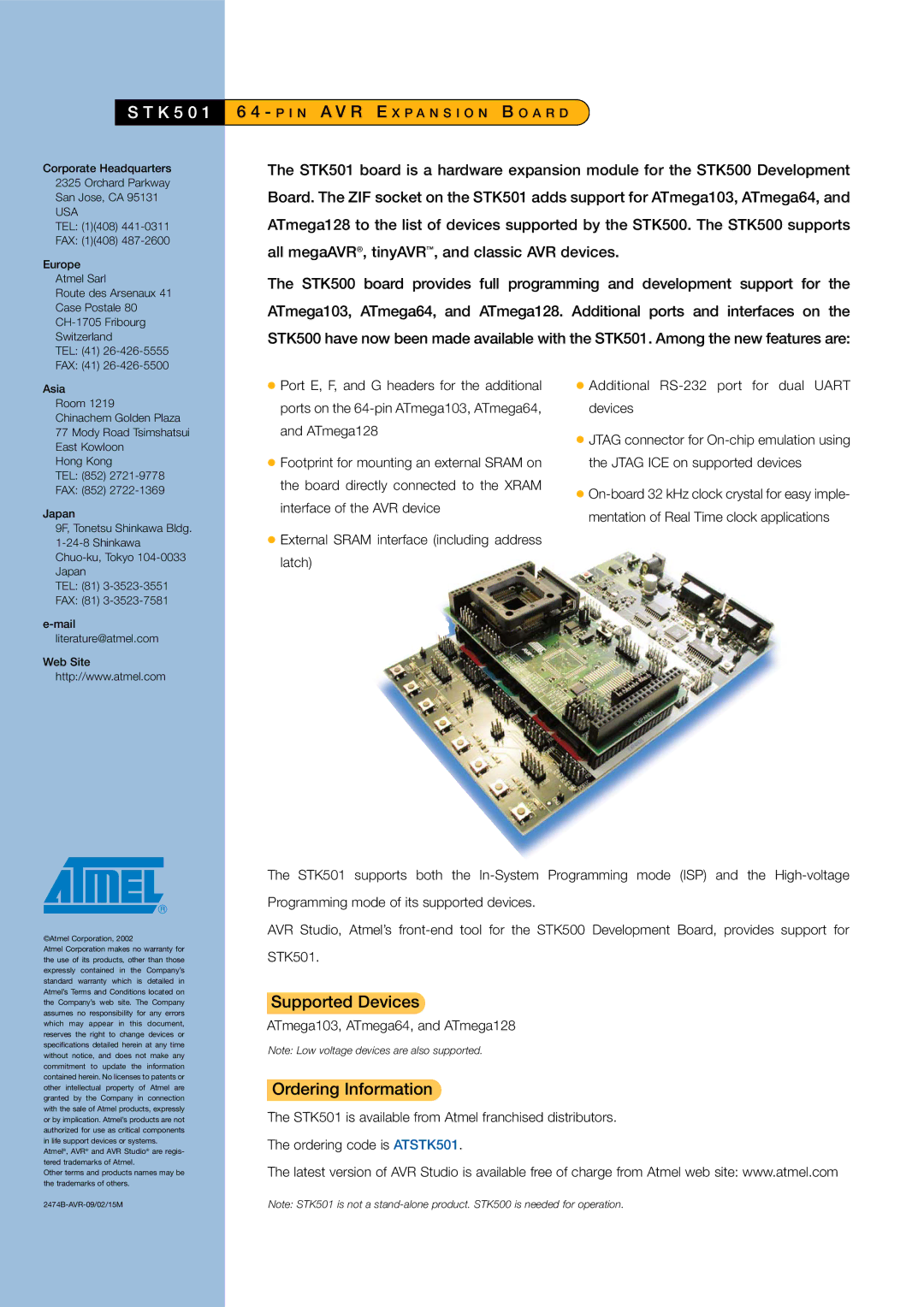STK501 specifications
The Atmel STK501 is an advanced development board that facilitates the design and prototyping of applications based on Atmel's AVR microcontrollers. This board is particularly appreciated by both beginners and experienced developers for its versatile features and ease of use. The STK501 is designed to support the ATmega series microcontrollers, making it a focal point for embedded system development.One of the standout features of the Atmel STK501 is its compatibility with a range of AVR devices, allowing developers to use a variety of microcontrollers depending on the specific needs of their projects. It supports programming via JTAG and ISP (In-System Programming), providing flexibility in how developers choose to upload code onto the board. This feature is crucial for iterative development, as it streamlines the debugging and programming processes.
The STK501 comes equipped with an extensive set of peripheral connections, including various I/O ports for connecting external components, sensors, and modules. The board includes LED indicators for easy status and error monitoring, along with several push-button switches that facilitate user interaction during development. Additionally, the presence of an LCD interface allows for the integration of liquid crystal displays, catering to projects that require a visual output.
In terms of power supply, the STK501 can be powered via USB or an external power supply, which adds to its adaptability. The onboard power regulation ensures that the microcontroller and connected components receive a stable voltage, critical for reliable operation. Furthermore, the board incorporates a prototyping area, allowing engineers to easily integrate additional circuits and components without the need for separate breadboards.
The Atmel STK501 benefits from a robust development ecosystem, aided by Atmel Studio, which provides a comprehensive Integrated Development Environment (IDE). This software is invaluable for debugging, code development, and simulation, making the entire development process more efficient.
In summary, the Atmel STK501 is an essential development tool for AVR microcontroller enthusiasts, characterized by its compatibility, extensive peripheral options, and robust support from development tools. Whether for hobby projects or professional applications, the STK501's features make it a strong candidate for any microcontroller-based design. Its adaptability, coupled with Atmel's continued innovations, ensures that developers have the resources to tackle a wide array of projects effectively.

